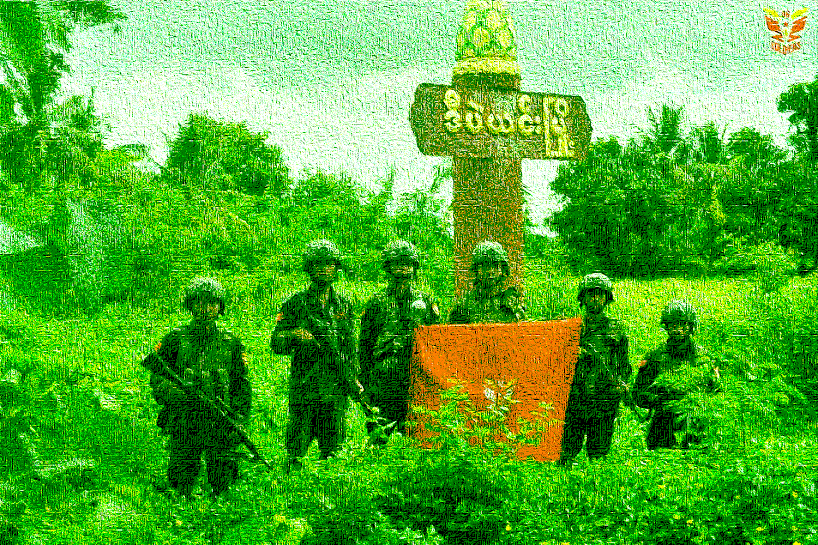Myanmar Spring Chronicle – August 20 Scene
(MoeMaKa) August 21, 2024
Increasing Military Momentum in the Central Region: The People’s Army, Public Security, and Anti-Terrorism Force
After a period of relative silence, major battles, widespread burning of hundreds of houses, and mass killings have started to emerge again in Sagaing Region. Following the second phase of Operation 1027, PDF forces have attempted to seize military outposts and some towns in Sagaing Region, as well as parts of Upper Magway and Mandalay Regions that border Sagaing.
In some areas of Magway and Mandalay Regions bordering Sagaing, People’s Defense Forces (PDF) have shown the capability to carry out guerrilla attacks on military convoys, ambushes, and mine attacks, making it difficult for the military to move freely between towns and villages. However, these forces still lack sufficient weapons, ammunition, and military experience to seize and hold larger bases or strategic locations.
The topography of the central region makes it necessary to secure strategic defenses around captured towns to prevent counterattacks. The lack of adequate weaponry, ammunition, and air defense systems are likely key reasons why there haven’t been many successful town captures in the region. Although the PDF forces managed to seize Kawlin in northern Sagaing during the first phase of Operation 1027, the military junta recaptured the town within a few weeks through a counteroffensive with air support.
This situation may indicate that the NUG/PDF armed forces are avoiding attacks on towns controlled by the military junta until they can address the gaps in manpower, weaponry, and experience needed to achieve a decisive advantage.
Recently, battalions from Shwebo District, NUG-controlled PDF forces, and other regional battalions collaborated in an attack to seize Dipeyin. They took advantage of the military junta’s focus on other regions to mount this offensive. However, despite successfully capturing the town, the lack of air defense and insufficient ammunition forced them to retreat and relinquish control of the town.
Similarly, during the same period, PDF forces attacked Nwahtogyi in Mandalay Region’s Myingyan District but failed to capture it and had to retreat. Reports also indicate that the MDY-PDF attacked military units along the Mandalay-Mogok road, managing to seize Tagaung. Further, PDF groups have reportedly collaborated with the TNLA (Ta’ang National Liberation Army) to carry out joint operations along the Mandalay-Mogok road, targeting smaller military outposts, with notable engagements occurring in July and August.
In Sagaing Region, in areas such as Yinmabin, Kani, Butalin, Ayadaw, Chaung-U, Wetlet, Shwebo, as well as regions within Magway, including Mying, Yezagyo, Pakokku, and Myauk, there are many small armed groups. However, the lack of unified command and coordination poses challenges for seizing territories, military bases, and towns.
The recent capture of some towns like Dipeyin has raised questions about whether the military junta can maintain morale or whether these events highlight the difficulties in holding onto captured towns.
In recent days, a statement has been widely circulated regarding the formation of a Central Supervisory Committee for Public Security and Anti-Terrorism, established by the military junta. It appears that this so-called “People’s Army” is now being labeled as “Public Security” to manipulate public perception. Following the enforcement of the Conscription Law about six months ago, it is believed that this committee may have been formed to provide military training to villagers to defend against PDF attacks on villages.
Since the start of Operation 1027, the junta has been actively implementing the Conscription Law and forming a “People’s Army” in an attempt to counter the growing strength of ethnic armed groups. However, these efforts are increasingly being seen as ineffective, given the junta’s loss of public support and the growing perception that their plans are failing.

